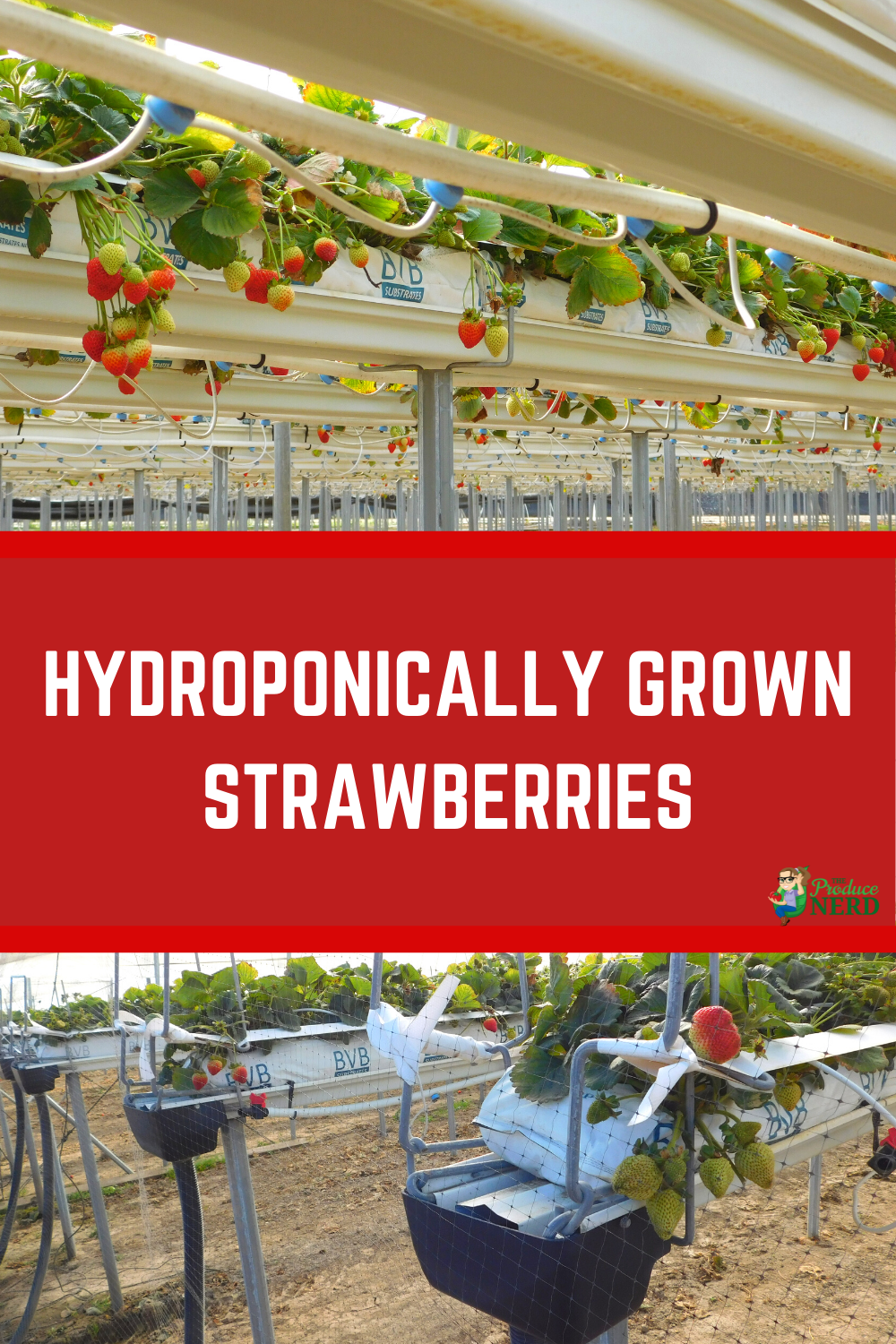Traditionally, strawberries are grown in-ground (as you can see here), but there are also other innovative ways that are being used to grow strawberries! Specifically, this post is going to cover a few different ways showing how strawberries are grown hydroponically, with examples from two different growers in California.
Table of Contents
Benefits of the Hydroponic Setup
Some of the main benefits of the hydroponic growing setup include:
- A better ergonomic setup for the workers. Workers can tend to the plants while standing up, and can harvest walking through the hoop houses with a cart that allows them to not have to bend over consistently. (You can compare this to the traditional strawberry harvesting process here.)
- The growing season can be year-round (if hoop houses or an alternative are being used). Instead of having a limited supply during certain months out of the year based on the growing region, the company can scatter the planting times to make it so they are able to supply fresh strawberries year-round.
- Less resources are utilized. The growing substrate can be reused for multiple growing seasons, and less water and chemicals are used. The traditional method of growing strawberries in ground requires soil fumigants, which can be avoided in the hydroponic growing method.
Issues with the Hydroponic Setup
- Higher start-up cost. In addition to renting/buying the land, the plants, inputs, mulch and drip tape for traditional strawberry farming, this setup also requires the investment in the hoop houses, gutters, growing substrate, irrigation pipelines, etc.
- Less knowledgeable references. Hydroponic growing operations are not new. However, growing hydroponic strawberries is not very common and there has not been a lot of research done on this specific fruit growing under these conditions.
Hydroponic Setup #1
This setup is very intricate and consists of many different factors. This hydroponic setup is located in Santa Maria, California, and is an above ground operation, set up under hoop houses and provides a very different experience for the workers (especially the harvesters).
The Setup
The hydroponic setup consists of:
- Hoop houses – The hoop houses are up year-round to protect the crop from the wind, rain and other environmental conditions.
- Gutters – The gutters are used to position the substrate bags and to collect the irrigation water. As part of the hydroponic setup, the plants are irrigated, the water is drained through the gutters and is then recycled to water the plants again.
- Substrate – A growing substrate is used in the process and can be found in the white bags. At this operation, they are using coir. Coir is a shredded coconut husk that is used because it is what they have found to be the most like soil, and has good water retention so they do not have to water as often. These substrate bags last for up to three growing seasons.
- Irrigation lines – The irrigation (and at times, fertigation) lines run through the sprinklers (there are approximately four per substrate bag). They are placed in the substrate bags and drain out through the gutters.
- Transplants – Strawberry plants are placed throughout the substrate bags. A strawberry transplant will be placed for every whole that is designated in the bag. Although the substrate bags can last for up to three growing seasons, the strawberry plants are only used for one growing season.
- Tape – A tape-like material is used to position the growing plants outward instead of downward. The idea is that the tape keeps the fruit from hanging too far down, keeps the strawberries off the gutters and from touching the substrate bags.
Hydroponic Setup #2
At this operation in Irvine, California, they are also using coconut husk in place of soil. You will also notice that in this type of hydroponic strawberry growing operation, they are able to be a lot more efficient with their space and grow multiple rows of strawberries at the same time. There are multiple layers of strawberries being grown in each row.
There are no hoop houses used, and the majority of these strawberries are sold at their local produce stand.
Since visiting these two farms, I have also seen footage of hydroponic strawberry growing operations on the east coast.
If you enjoyed this post, you might also be interested in reading:
